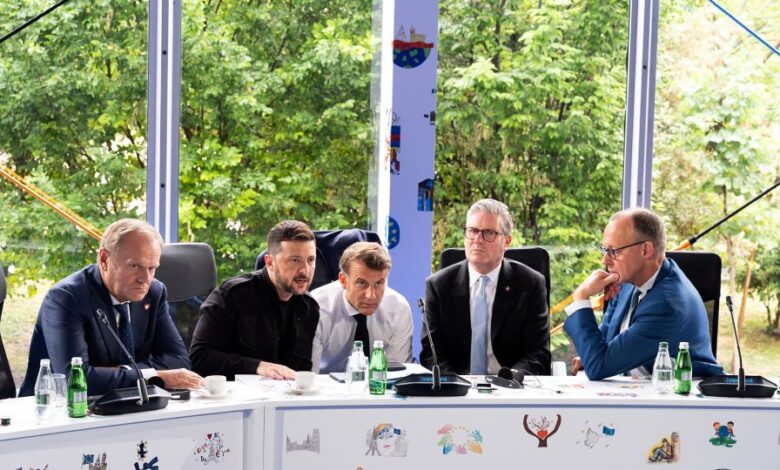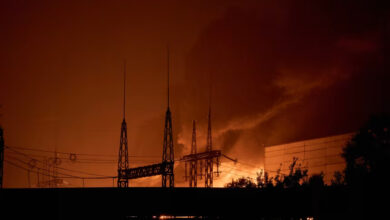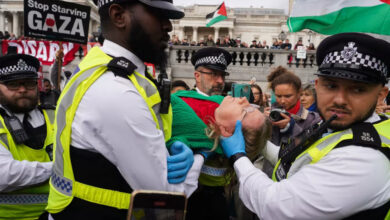
Much has happened this week, but what failed to transpire is the more telling.
The first direct talks between Ukraine and Russia should have heralded a new era of diplomacy towards solving Europe’s largest conflict since World War II. Instead, their context, brevity and limited outcome provided skeptics with more reasons to doubt Moscow wants peace.
The three conclusions – a prisoner swap, further talks about their presidents meeting, and both sides composing their vision of a future ceasefire – sound like progress.
But prisoner swaps occur regularly, Ukraine has already said it wants an immediate and unconditional ceasefire on air sea and land, and had already offered direct talks, between President Volodymyr Zelensky and his Russian counterpart Vladimir Putin. Russia rejected those two ideas, but Friday said it would again consider them.
Diplomacy has travelled a long distance this week to essentially return to zero – back where it started on Saturday. Then, in Kyiv, Ukraine, France, Germany, the UK and Poland demanded an unconditional ceasefire for a month, and published a picture of the five countries’ leaders on the phone to President Trump. They trumpeted his backing for the truce, but also what France called “massive sanctions” if Russia rejected the demand.
Six days later, on Friday, they again posted a picture of the same five men, huddled again around a telephone, this time in the Albanian capital Tirana, talking to POTUS. French President Emmanuel Macron said it was “unacceptable” Russia continues to ignore a truce. The UK’s PM Keir Starmer said Putin “must pay the price for avoiding peace.”

The symmetry of the demands and the images was remarkable. In the past week, Trump has performed stunning diplo-gymnastics. Putin shrugged off the demands for a truce and suggested direct talks in Istanbul. Zelensky said he would meet Putin there, and Trump offered to be an intermediary. Putin rejected all bar a junior meeting. And then Trump deflated any sense of urgency by adding he never expected Putin to attend without his also being in Istanbul, apparently concluding that “nothing is gonna happen” on Ukraine before he meets the Kremlin head.
We do not know how European leaders handled the Friday call, a concerned Macron pictured at its center, but they surely had to remind Trump of promises made. Trump has shown reluctance to pressure or speak ill of Putin in public. Yet now his credibility with his closest European allies – “smart cookie” Macron, and “tough negotiator” Starmer, who offered him a second state visit – is on the line. It is unclear whether this will stir him.
We have now gone full circle, in just a week, through the contradictory emotions that beset the White House on this thorny foreign policy issue on which the US administration has over-promised to deliver.
Two constants have emerged. Putin cares little for European or American pressure, simply proposing a minimalist peace offering, with maximalist demands, and refusing to budge. Trump seems to privately offers support to Ukraine and its allies, but publicly is seen extending the olive branch of a bilateral meeting with the Kremlin head, whenever Moscow is ready.
Intermittently, this White House has been keen to telegraph that their patience with Putin is limited, even expiring. Occasionally, even Trump hints at this, vaguely touting secondary sanctions as a throwaway remark earlier this week. Yet this impatience has yet to translate into the firm action Europe wants to see.
The White House benefits from the Kremlin’s deft baby-steps, insincere, inching towards peace. Russia does enough to permit Trump to pretend they are serious, while yielding no ground at all – even complicating matters Friday with a reported demand that Ukraine hand over territory Russia hasn’t conquered. There are enough vague, intractable whispers of diplomacy and further talks about talks, to provide the tantalising promise of a deal, without striking, or even delineating one. Russia is playing for time, evidently, and amassing forces on the eastern frontline, drone images show, ahead of a likely summer offensive.
Yet sometimes moments of clarity emerge. This week has perhaps helped elucidate where Moscow truly stands, but also too Trump’s reluctance to cause Putin pain. Clarity can be uncomfortable, and on Friday a stark assessment of Trump’s policy came from his former Ambassador to Kyiv, Bridget Brink, who resigned last month.
In an op-ed, Brink explained why:
“Unfortunately, the policy since the beginning of the Trump administration has been to put pressure on the victim, Ukraine, rather than on the aggressor, Russia…. As such, I could no longer in good faith carry out the administration’s policy and felt it was my duty to step down. ….Peace at any price is not peace at all ― it is appeasement. And history has taught us time and again that appeasement does not lead to safety, security or prosperity. It leads to more war and suffering.”
It may be too early to determine whether Trump’s soft-gloves approach spells appeasement. But the US president has deflated a week of mounting tension and pressure on Moscow by suggesting no progress can be expected until he meets Putin.
And – as was the case with the elusive summit between Trump, Zelensky and Putin – do not expect this heady mix of egos, deference and loathing to yield results. Is the lesson of the past week that Trump will, in person, force Putin into accepting concessions that months of pressure, and years of brutal battlefield struggles, have not? Even an eventual summit between Trump and Putin may not fix the war, but instead reset the clock on diplomacy, and like this week leave Ukraine back at zero.




